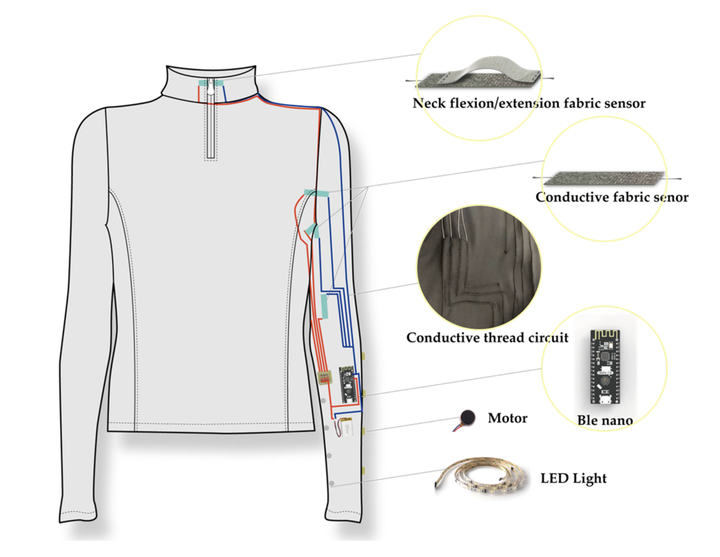
Abstract
Research from psychology has suggested that body movement may directly activate emotional experiences. Movement-based emotion regulation is the most readily available but often underutilized strategy for emotion regulation. This research aims to investigate the emotional effects of movement-based interaction and its sensory feedback mechanisms. To this end, we developed a smart clothing prototype, E-motionWear, which reacts to four movements (elbow flexion/extension, shoulder flexion/extension, open and closed arms, neck flexion/extension), fabric-based detection sensors, and three-movement feedback mechanisms (audio, visual and vibrotactile). An experiment was conducted using a combined qualitative and quantitative approach to collect participants’ objective and subjective emotional feelings. Results indicate that there was no interaction effect between movement and feedback mechanism on the final emotional results. Participants preferred vibrotactile and audio feedback rather than visual feedback when performing these four kinds of upper body movements. Shoulder flexion/extension and open-closed arm movements were more effective for improving positive emotion than elbow flexion/extension movements. Participants thought that the E-motionWear prototype were comfortable to wear and brought them new emotional experiences. From these results, a set of guidelines were derived that can help frame the design and use of smart clothing to support users’ emotional regulation.